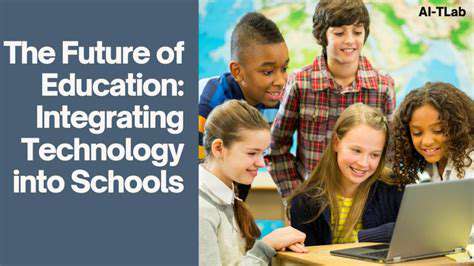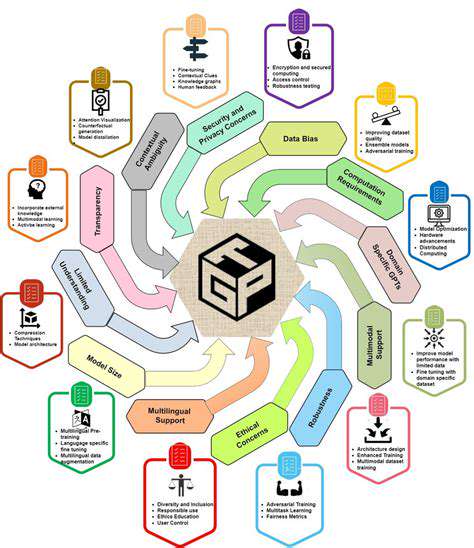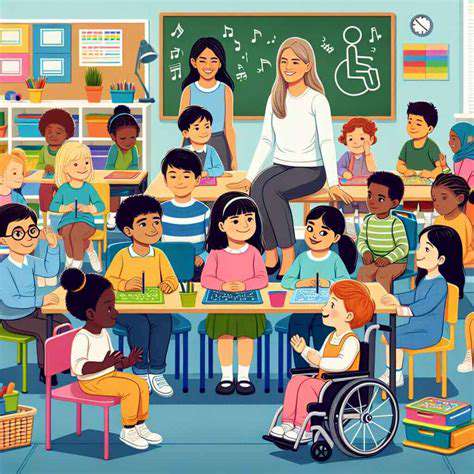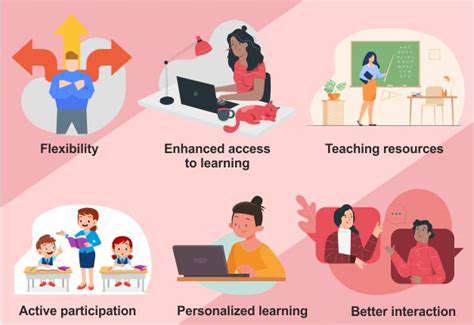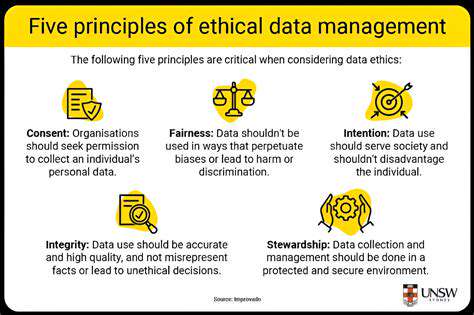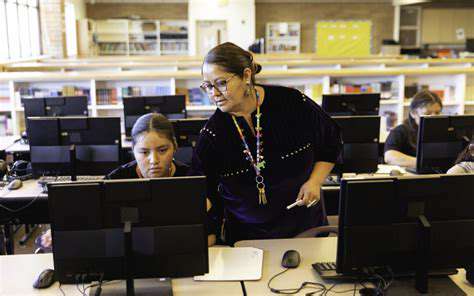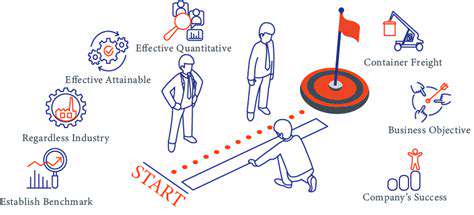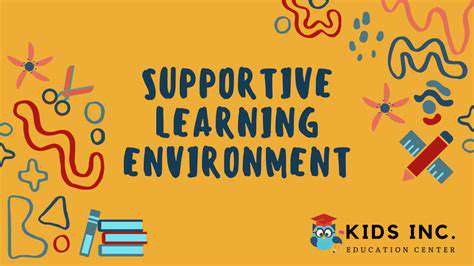The Impact of EdTech on Teacher Workload and Efficiency
Personalized Learning Paths
Personalized learning paths are a key aspect of EdTech's impact. By leveraging data and adaptive learning technologies, educators can tailor instruction to meet the unique needs and learning styles of each student. This approach moves beyond a one-size-fits-all model, fostering a deeper understanding and engagement with the material. Instead of simply presenting the same information to everyone, personalized learning platforms can adjust the pace, complexity, and content to optimize learning outcomes for individual students. This individualized approach can significantly improve student motivation and achievement by addressing specific knowledge gaps and building upon strengths.
Imagine a student struggling with fractions. A personalized learning platform could identify this weakness and provide targeted practice exercises, interactive simulations, or even video tutorials specifically designed to address the student's individual challenges. This tailored approach allows students to progress at their own speed and master concepts before moving on to more complex material. This flexibility is a significant advantage over traditional methods, where students might fall behind or become disengaged due to a mismatch between the curriculum and their individual learning needs.
Differentiated Instruction Strategies
EdTech tools empower teachers to implement differentiated instruction strategies more effectively. Differentiation involves adapting teaching methods, materials, and assessments to cater to diverse learning styles, paces, and needs within a classroom. This approach acknowledges that students learn in different ways and at different rates, ensuring that everyone has the opportunity to succeed. Through the use of various learning resources, teachers can create diverse learning experiences that cater to visual, auditory, and kinesthetic learners.
For example, an EdTech platform could provide multiple ways to represent the same concept—a video explanation, interactive exercises, and written summaries. Teachers can also use data from these platforms to identify students who may require additional support or enrichment activities. This targeted approach fosters a more inclusive learning environment where every student feels supported and challenged appropriately. By tailoring instruction to different learning styles, teachers can create more engaging and effective lessons for all students.
Tailored Feedback and Assessment
EdTech platforms often incorporate sophisticated feedback mechanisms that provide students with personalized insights into their learning progress. This immediate and constructive feedback is crucial for student growth. Instead of simply receiving a grade, students can receive detailed explanations of their strengths and weaknesses, enabling them to identify areas needing improvement. This personalized feedback loop allows students to actively participate in their own learning journey, building metacognitive skills and promoting self-regulation.
Automated assessments can identify knowledge gaps and provide targeted interventions quickly and efficiently. This constant monitoring enables teachers to provide timely support and adjust their teaching strategies to better address individual student needs. The availability of real-time data on student performance allows for more effective and responsive classroom management. This continuous monitoring and feedback loop foster a more dynamic and effective learning environment.
Adaptive Learning and Engagement
EdTech's adaptive learning capabilities offer a powerful means of enhancing student engagement and motivation. Adaptive learning systems adjust the difficulty and content of lessons based on student performance, ensuring that the learning experience remains challenging and relevant. This personalized approach encourages active participation and sustained effort. By providing just-in-time support and challenges, adaptive learning platforms can significantly boost student interest and enthusiasm for learning.
These systems can identify specific knowledge gaps and provide targeted interventions, effectively addressing areas where students are struggling. The personalized nature of adaptive learning fosters a sense of accomplishment and progress, motivating students to continue learning and exploring new concepts. This dynamic approach ultimately leads to a more effective and fulfilling learning experience for all students.
Traditional manufacturing processes often rely heavily on fossil fuels, leading to significant greenhouse gas emissions. These emissions contribute to air pollution, impacting human health and exacerbating climate change. The discharge of industrial waste into water sources further degrades ecosystems and poses risks to aquatic life. This unsustainable approach is not only environmentally damaging but also economically precarious in the long run as the costs of environmental remediation and regulations continually rise.
The Impact on Lesson Preparation and Delivery
Planning and Preparation
EdTech tools significantly impact lesson preparation. Teachers can leverage digital resources to create engaging and differentiated learning experiences tailored to diverse student needs. This includes accessing pre-made lesson plans, interactive simulations, and multimedia content, freeing up valuable time that can be spent on individual student needs and creative lesson customization. Instead of solely relying on traditional textbooks, teachers can integrate a wealth of supplementary materials that cater to various learning styles and encourage deeper comprehension.
The ability to quickly and easily access and adapt digital materials streamlines the lesson planning process. Teachers can create personalized learning paths, incorporating individual student strengths and weaknesses, which was often a time-consuming and complex task with traditional resources. This efficiency allows for greater flexibility in responding to student needs and adapting lessons on the fly.
Differentiated Instruction
EdTech tools enable teachers to create a more dynamic and personalized learning environment. They can tailor assignments, provide supplementary resources, and offer varied methods of demonstrating understanding, accommodating diverse learning styles and paces. For example, interactive exercises and adaptive learning platforms can adjust the difficulty level based on individual student responses, promoting progress at a suitable pace for each learner.
With the ability to track student progress in real-time, teachers can identify learning gaps and provide targeted support. This proactive approach ensures that all students are receiving the necessary assistance to succeed, optimizing the learning experience for each individual.
Assessment and Feedback
EdTech facilitates more efficient and effective assessment practices. Digital tools allow for quick and automated grading of multiple-choice quizzes and assignments, freeing up time for teachers to provide detailed, personalized feedback. Moreover, formative assessments can be incorporated seamlessly into the learning process, providing immediate insights into student understanding and allowing for adjustments to instruction in real-time.
Engagement and Motivation
Interactive simulations, games, and multimedia resources can dramatically boost student engagement and motivation. These engaging digital tools make learning more dynamic and captivating, moving beyond traditional methods that can sometimes feel static or uninspired. By incorporating these elements, teachers can cultivate a more active and participatory learning environment, fostering greater student interest and motivation.
Resource Management and Organization
EdTech tools effectively manage and organize resources, streamlining administrative tasks. Digital platforms can store lesson plans, assignments, and student work, eliminating the need for physical file cabinets and ensuring easy access to materials for both teachers and students. This organization saves time and reduces the potential for errors, allowing teachers to focus more on their core responsibilities of teaching and supporting students.
Professional Development and Collaboration
EdTech platforms facilitate professional development and collaboration among teachers. Online communities, forums, and shared resources can provide opportunities for teachers to connect, share best practices, and learn from one another. This collaborative environment can foster a sense of community and support, allowing teachers to stay current with the latest educational trends and techniques, thereby improving their teaching practice.
The Need for Ongoing Support and Professional Development
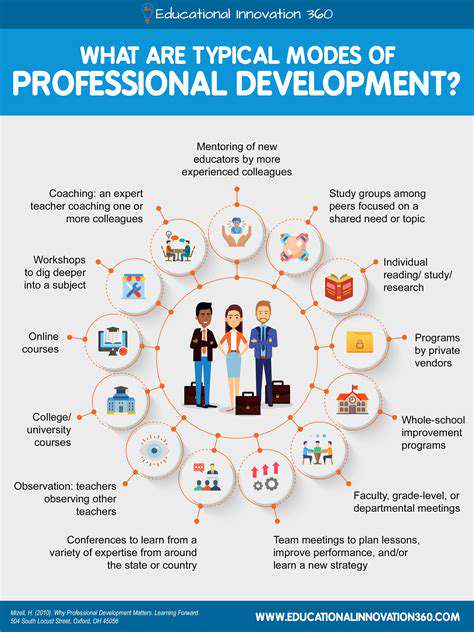
Ongoing Support for Effective Policy Implementation
Effective policies are not simply enacted and then forgotten. They require a sustained commitment to implementation, monitoring, and adaptation. This ongoing support is crucial for ensuring that policies achieve their intended goals and address emerging challenges. Without continuous effort, the initial enthusiasm and momentum behind a policy can wane, leading to ineffective outcomes and potentially undermining public trust.
A comprehensive approach to policy implementation necessitates ongoing evaluation mechanisms. These mechanisms should identify areas of success, pinpoint challenges, and facilitate necessary adjustments. This iterative process is essential for policy refinement and ensures that the policy remains relevant and effective in response to evolving circumstances.
Resource Allocation and Sustainability
Implementing policies often requires significant resources, including financial support, human capital, and technological infrastructure. A sustainable resource allocation strategy is essential for ensuring that policies can be maintained over the long term. This strategy should consider the long-term implications of resource use and prioritize efficient and effective resource deployment to maximize impact.
Regular assessments of resource needs are critical. These assessments should factor in the evolving context, including economic shifts, technological advancements, and societal changes to ensure that resources are utilized effectively and efficiently. This proactive approach prevents policy implementation from becoming unsustainable and ensures long-term impact.
Stakeholder Engagement and Collaboration
Policy success hinges on the active participation and engagement of all stakeholders. This includes not only government agencies but also affected communities, businesses, and individuals. Constructive dialogue and collaboration are paramount for identifying potential challenges, gathering valuable input, and ensuring that policies are tailored to meet the specific needs of different groups.
Open communication channels and platforms for stakeholder engagement are vital. These mechanisms facilitate the exchange of information, feedback, and ideas, enabling a more comprehensive understanding of the policy's impact and potential unintended consequences. This collective effort fosters a sense of ownership and accountability, further enhancing policy effectiveness.
Monitoring and Evaluation for Continuous Improvement
Regular monitoring and evaluation are critical components of ongoing support. These processes provide valuable insights into policy effectiveness and identify areas requiring adjustments. Monitoring and evaluation allow for a dynamic assessment of policy impact, enabling informed decision-making and ensuring that the policy remains relevant and effective.
Adaptability and Flexibility in Response to Change
Policies must be adaptable and flexible to address unforeseen circumstances and changing societal needs. The world is constantly evolving, and policies must remain responsive to these changes. Policies that are rigid and inflexible are more likely to fail in the face of unforeseen challenges. A proactive approach to policy adaptation ensures that the policy remains relevant and effective in the long term, contributing to sustainable progress.
Flexibility involves being prepared to adjust policies based on new information, emerging challenges, and changing circumstances. This adaptability allows policies to remain effective and relevant as the environment evolves.
Read more about The Impact of EdTech on Teacher Workload and Efficiency
Hot Recommendations
- The Gamified Parent Teacher Conference: Engaging Stakeholders
- Gamification in Education: Making Learning Irresistibly Fun
- The Future of School Libraries: AI for Personalized Recommendations
- EdTech and the Future of Creative Industries
- Empowering Student Choice: The Core of Personalized Learning
- Building Community in a Hybrid Learning Setting
- VR for Special Education: Tailored Immersive Experiences
- Measuring the True Value of EdTech: Beyond Adoption Rates
- Addressing Digital Divide in AI Educational Access
- Preparing the Workforce for AI Integration in Their Careers
